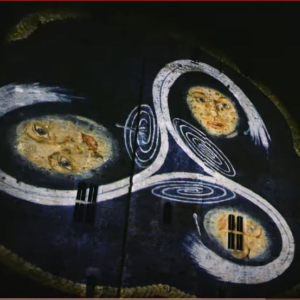

St. Brigid’s Day is celebrated on February 1st in Ireland and has long symbolised hope, renewal and the feminine. The ancient Celtic festival of Imbolc, which traditionally marks the beginning of spring, has evolved into a tribute to vibrant women with a connection to Ireland and their creative achievements.
Since 2018, Irish Embassies and Consulates across the world have been marking the day through a broad programme of events featuring worldwide celebrations of the lives and legacies of Irish women with song and dance, talks and podcasts, creative activities and much more.
Check out St Brigid's Day 2024 celebrations around the world HERE
Herstory Light Show for Kildare County Council's 'Brigid 1500' Celebrations
Who was St. Brigid, and why do her stories continue to this day?
In Ireland, 1st February marks the beginning of spring and the celebration of Lá Fhéile Bríde, St Brigid’s Day. Discover more HERE. The ancient Celtic festival of Imbolc, traditionally marks the beginning of spring and has evolved into a celebration of the creativity and achievements of women with a connection to Ireland.
Discover the history of St. Brigid, and how the arrival of spring heralds hope and new beginnings for the Celts. Click HERE to get your St Brigid’s Day History-At-Home Pack. St Brigid’s cloak is central to the story of how she founded her church and became one of Ireland’s patron saints.
Enjoy some of the creative performances and discussions by Irish women.
The story of St. Brigid's Cross
Brigid’s Cross is widely believed to be a Christian symbol but its origins lie in ancient folklore. The story began with the mythical Irish goddess Brigid, whose traditions were later blended with St Brigid of Kildare to create a unique combination out of two totally different cultures. The cross is usually woven out of rushes or straw. It consists of a central square surrounded by four arms at right angles and was used to adorn the doors and rafters of Irish homes, often in the kitchen, warding off fire and evil. Watch the video below to discover more.